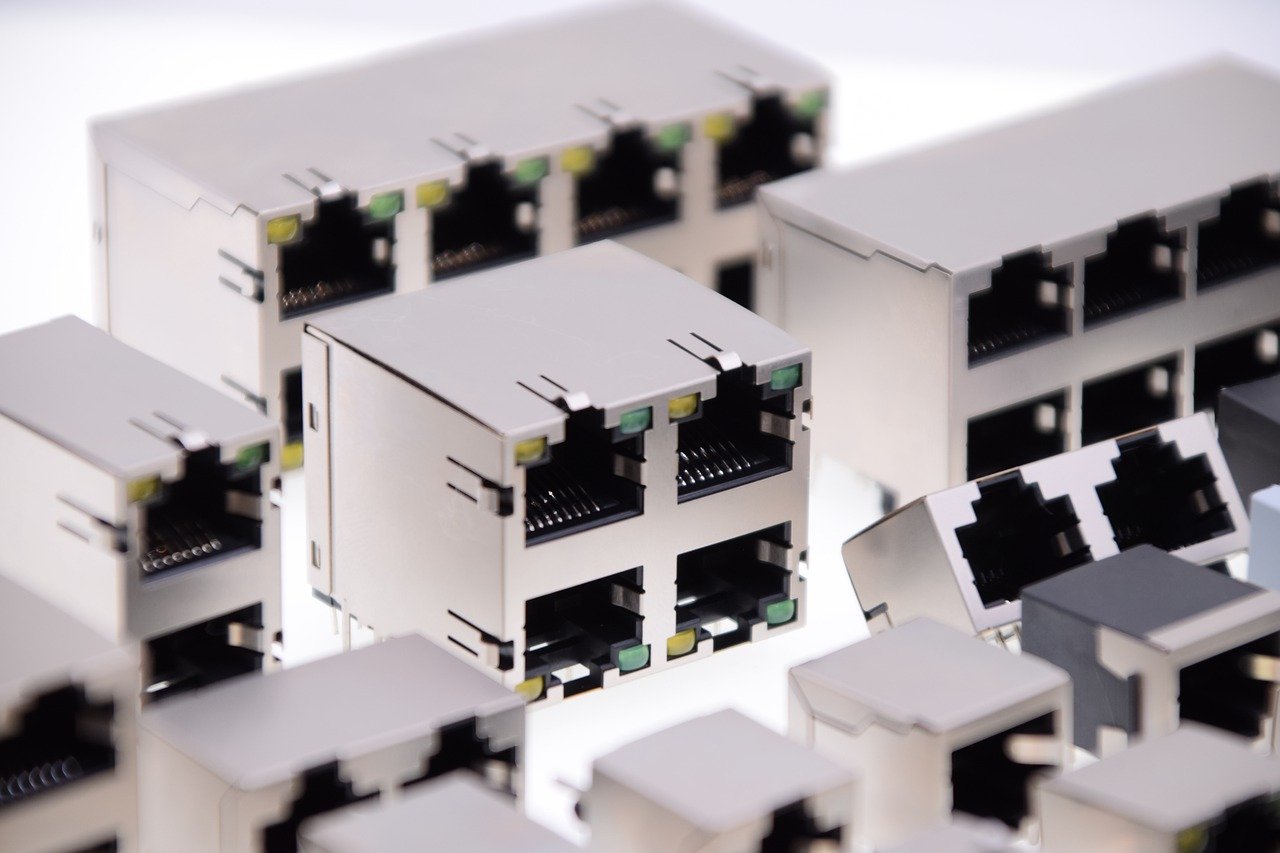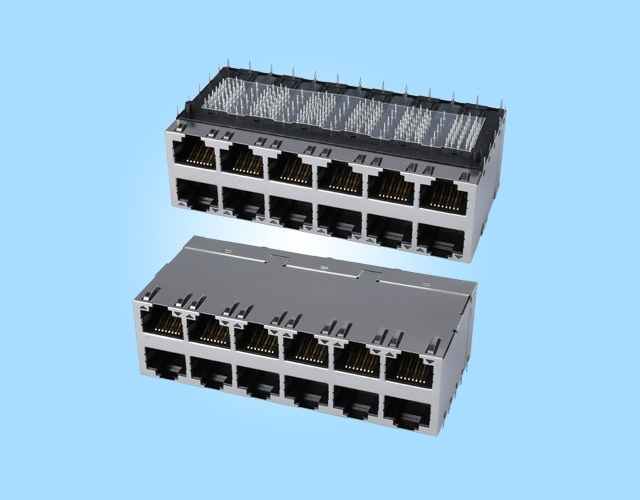Introduction
In the current era when the digital wave is sweeping across the globe, the speed and stability of network connections have become crucial for the development of various industries. Among complex and sophisticated network devices, the SFP port, as a vital hub for data transmission, plays a significant and indispensable role. This article aims to provide in - depth knowledge about the basics of SFP ports and explore their important role in the network world.
1. What is an SFP Port?
The SFP port, short for Small Form - factor Pluggable port, is a small, pluggable network interface module widely used in network devices, playing a key role in modern networks.
2. Working Principle of SFP Ports
As an important interface module in network communication, the working principle of SFP ports encompasses several key aspects, including signal conversion, transmission, control, and management. The details are as follows:
2.1 Signal Conversion Mechanism
Optical Module Signal Conversion
In an SFP optical module, the transmission and reception of data involve the mutual conversion between optical and electrical signals. When transmitting data, the electrical signal from the device's motherboard enters the SFP optical module. The laser diode inside the module converts the electrical signal into an optical signal according to the changes in the electrical signal. When receiving data, the photodiode in the module comes into play, converting the received optical signal back into an electrical signal.
Electrical Module Signal Processing
The SFP electrical module mainly processes electrical signals during data transmission. When transmitting data, it receives the electrical signal from the device's motherboard and then amplifies, shapes, and encodes the electrical signal through its internal signal processing circuit. When receiving data, the electrical module obtains the electrical signal from the transmission medium. It also goes through a series of operations such as amplification, filtering, and decoding to remove noise and interference mixed in during the transmission process, restore the original data signal, and then send it to the device's motherboard.
2.2 Data Transmission Process
Data Encoding
To ensure the accuracy and reliability of data during transmission, SFP port encode the data. Common encoding methods include Manchester encoding and Non - Return - to - Zero (NRZ) encoding.
Transmission Medium Adaptation
SFP port can be adapted to various transmission media, such as optical fibers and twisted - pair cables.
2.3 Rate Adaptation and Negotiation
Automatic Rate Detection
SFP port have the ability to automatically detect the transmission rate of the peer device. When an SFP port establishes a connection with a peer device, it probes the supported rate of the peer device by sending specific detection signals.
Rate Negotiation Mechanism
After detecting the rate of the peer device, the SFP port negotiates the rate with the peer device based on its own supported rate range. If the peer device supports multiple rates, the SFP port will preferentially select the highest rate supported by both sides for data transmission.

3.Types and Specifications of SFP Ports
3.1 SFP Port Types
|
|
SFP (Standard - Rate) Port |
SFP+ (High - Speed) Port |
QSFP (Four - Channel) Port |
|
Rate |
The SFP standard - rate port mainly supports a transmission rate of 1Gbps. In some cases, it can also support 2.5Gbps, but 1Gbps is more common. This relatively low rate can meet the basic data - transmission requirements of some network scenarios with low bandwidth demands. |
The SFP+ port supports a transmission rate of up to 10Gbps. Compared with the SFP standard - rate port, its bandwidth has increased several times, which can meet the needs of high - speed data transmission. |
QSFP ports have multiple rate specifications. Common ones include 40Gbps (10Gbps per channel, with four channels in total) and 100Gbps (25Gbps per channel). By transmitting data in parallel through multiple channels, it achieves higher transmission rates than SFP and SFP+. |
|
Application Scenarios |
It is often used in small - business networks to connect common office devices, such as printers, IP phones, low - load switches, and routers. |
Inside data centers, servers need to frequently conduct large - scale data transmission, such as virtual machine data migration in a cloud - computing environment and data interaction in big - data processing. |
In ultra - large - scale data centers, QSFP ports are widely used for high - speed interconnection between servers and switches, as well as between switches. This meets the need for rapid exchange of massive data and improves the overall data - processing and transmission capabilities of the data center. |
3.2 SFP Port Specifications
SFP port specifications include many parameters. Transmission distance, optical power, wavelength, and interface standards have a crucial impact on network performance, determining network coverage, signal quality, data - transmission capacity, and compatibility.
Transmission Distance
The transmission distance of SFP ports varies depending on the type of optical module and the fiber material. When a multimode optical module is paired with a multimode fiber, the transmission distance is generally within a few hundred meters. For example, a 62.5μm multimode fiber paired with an 850nm - wavelength optical module has a transmission distance of approximately 220 meters, and a 50μm multimode fiber paired with an 850nm - wavelength optical module can reach 550 meters. When a single - mode optical module is paired with a single - mode fiber, the transmission distance can reach several kilometers or even dozens of kilometers.
Optical Power
Optical power includes transmitted optical power and received optical power. The transmitted optical power is the intensity of the optical signal output by the transmitting end of the optical module, with the unit of dBm. The common range is from - 9dBm to - 3dBm. The received optical power is the intensity of the optical signal that the receiving end of the optical module can detect. The receiving sensitivity is generally between - 20dBm and - 30dBm.
Wavelength
Common wavelengths used in SFP ports are 850nm (for multimode), 1310nm, and 1550nm (for single - mode). Different wavelengths have different transmission characteristics in optical fibers. The 850nm wavelength is used for multimode fibers. It has a relatively large transmission loss but a low cost and is suitable for short - distance transmission.
Interface Standards
Common interface standards for SFP ports are LC and SC. The LC interface is a miniaturized fiber - optic connector with a small size and a duplex design, which can perform data transmission and reception simultaneously. It is often used in devices with high - density ports. If the interface standards of SFP ports on different devices in the network are inconsistent, adapters are required for connection, which increases costs and the risk of failures.

4.Comparison between SFP Ports and RJ45 Ports
|
|
SFP Port |
RJ45 Port |
|
Transmission Medium |
Supports two transmission media: optical fibers and copper cables (electrical SFP ports) |
Mainly uses twisted - pair cables to transmit electrical signals. Common twisted - pair cables include Unshielded Twisted Pair (UTP) and Shielded Twisted Pair (STP) |
|
Transmission Rate |
SFP ports have various rates. Common rates for standard SFP ports are 1Gbps, and SFP+ ports can reach 10Gbps. Some SFP ports with even higher rates can meet specific requirements |
The transmission rates of RJ45 ports are relatively lower. Common rates are 10Mbps, 100Mbps, and 1Gbps. Although there are RJ45 ports that support higher rates (such as 2.5Gbps, 5Gbps, 10Gbps), their popularity is not as high as the high - speed versions of SFP ports |
|
Transmission Distance |
When using optical fibers, the transmission distance is relatively long. When using copper cables in electrical SFP ports, the transmission distance is generally within 100 meters |
When using twisted - pair cables, the standard transmission distance is 100 meters. Beyond this distance, the signal will be severely attenuated |
|
Anti - interference Ability |
When using optical fibers for transmission, it is almost unaffected by electromagnetic interference. When using copper cables in electrical SFP ports, the anti - interference ability is slightly stronger than that of RJ45 ports, but it is still affected by certain electromagnetic interference |
When using twisted - pair cables to transmit electrical signals, it is vulnerable to surrounding electromagnetic interference |
|
Cost |
The cost of SFP ports is relatively high |
The cost of RJ45 ports is low |
Conclusion
Through a comprehensive understanding of the basic knowledge of SFP port, we can recognize their core value in network connections. From their basic concepts, working principles, diverse types, and key specifications to the comparison with RJ45 ports, every detail affects network performance. Whether building a small - office network or a large - scale data center, mastering the knowledge of SFP port is of great significance. We hope this article can help you make more informed decisions when dealing with network - device selection and connection issues.
SFP port are many models, want to choose the right SFP port is difficult, if you need further information, you can contact GLGNET.